The Sycamore Fig is significant in Christian Tradition. In the Gospel According to Luke, it is told about Zacchaeus, a tax collector. He went up traditionally on top of a Fig tree in Jericho to see Jesus. He was an example of Jesus’ earthly mission to bring salvation to the lost since tax collectors were despised as traitors (working for the Roman Empire, not for their Jewish community). And as being corrupt. When I give guided tours in Jericho, I like to take my guests to the traditional Zacchaeus’ Sycamore fig in Jericho, contained on the grounds of the Russian Museum.
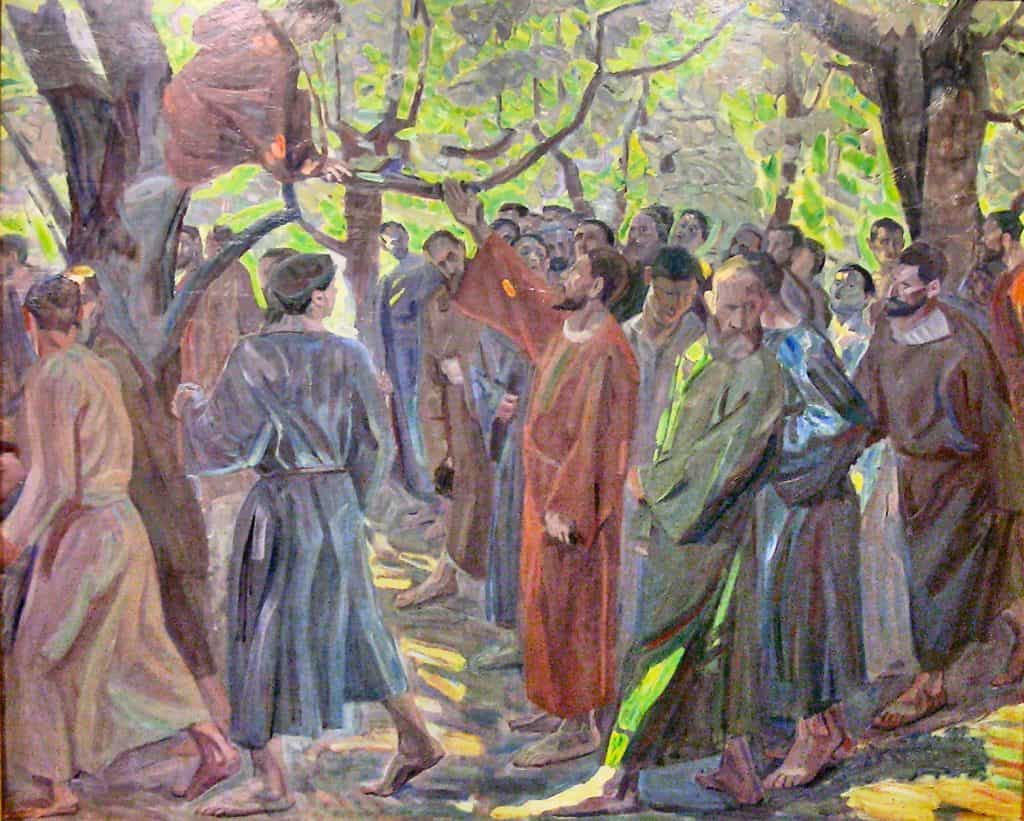
The Sycamore Fig Tree in the Hebrew Bible
So the Sycamore Fig in Psalms is listed with vines as sources of food destroyed in the plagues inflicted on the Egyptians by God (Psalms 78:47). This verse implies that Ficus sycomorus could not survive in the mountainous regions of Palestine and Egypt: “He destroyed their vines with hail, and their sycamore trees with frost.” (Psalms 78:47).
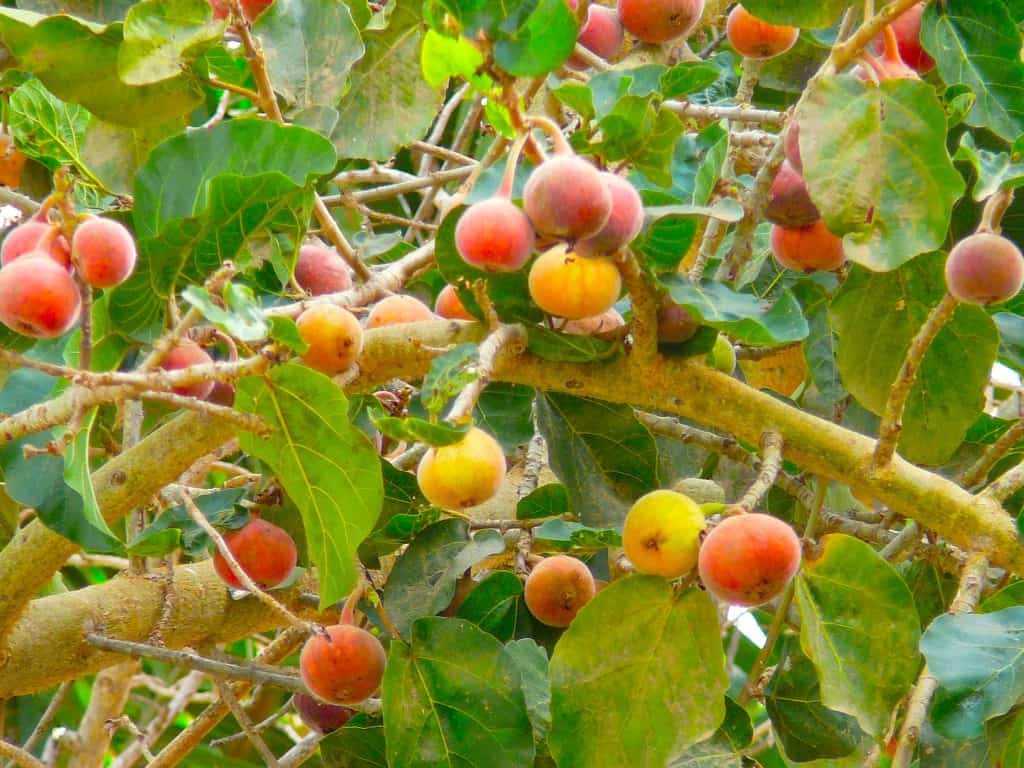
Credit: Atamari, CC BY-SA 3.0, via Wikimedia Commons
Also, King David appointed an officer to look after the olives and sycamores of the western foothills (1 Chron 27:28). Another mention in the Bible is when the prophet Isaiah also contrasts sycamores and cedars (Isaiah 9:10). Also, we learn that the prophet Amos refers to his secondary occupation as a tender of sycamores. This task involved slashing the fruits to induce ripening (Amos 7:14).
The Bible also specifies that the sycamore tree is to be found in the Shfela (lit. “low lands”). The low hills slope down from the Mountains of Judea to the shoreline. In 1 Kings 10:27, it is said that King Solomon made cedars as common as sycamores.
The Sycamore Fig Tree in Post-Canonical Texts
We learn more about the tree in post-canonical texts like Mishnah and Talmud. For example, in the Mishna, the borders of the various districts of the Land of Israel are delineated. And the Upper Galilee is defined as the area north of Kfar Hananya “where the sycamore does not grow; the Lower Galilee is the area south of Kfar Hananya where the sycamore does grow. Lastly, the Talmud, tractate Berakhot mentions sycamore about tithing and its subsequent appropriate blessing.
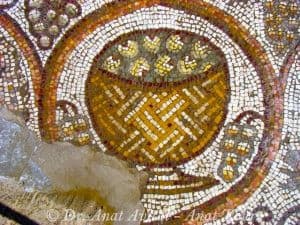
Credit: Anatavital, CC BY-SA 4.0, via Wikimedia Commons
The Tree Today In Israel
If you walk Tel Aviv’s streets, you will find some sycamores. Specifically, I am referring to King George St’, where you can find them along the entire boulevard. In the past, sycamores had economic value. The Sycamore’s wood was used for heating, and the fruit was a food source. But these days, the sycamore’s taste is not compared with the common fig, which is much better. So in modern times, it has lost its commercial value. However, megabats like to eat the fruit of the sycamore.
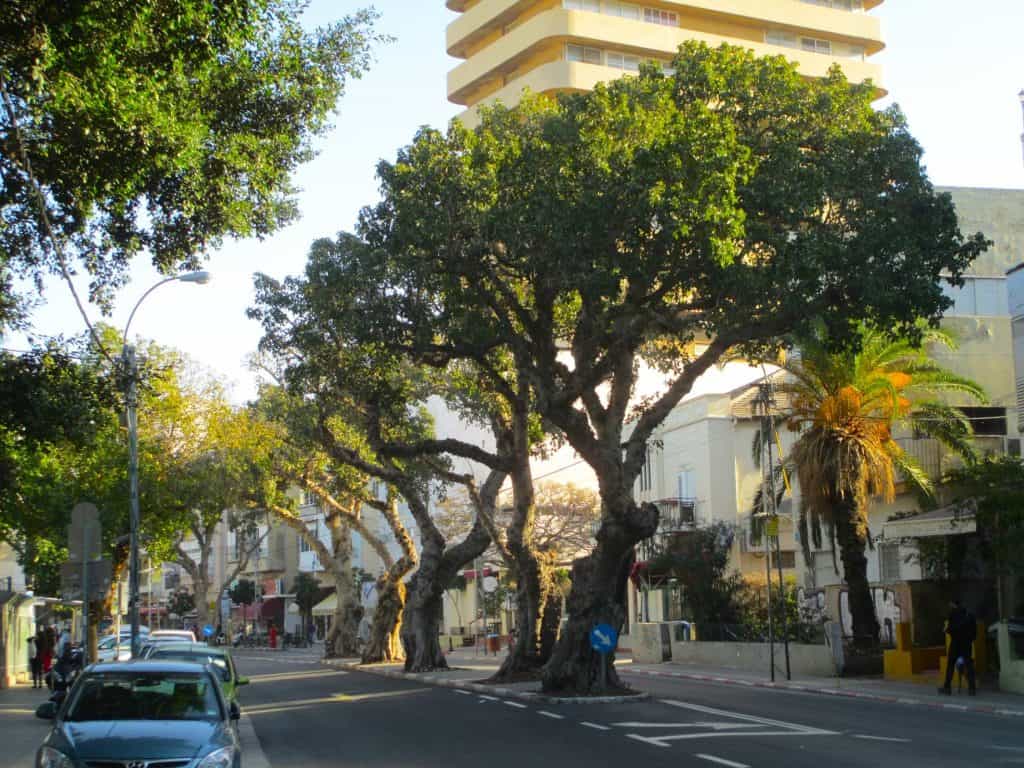
Credit: Dr. Avishai Teicher Pikiwiki Israel, CC BY 2.5, via Wikimedia Commons
Where is the Oldest Sycamore Fig Tree In Israel?
Even Though I that a private tour guide In Israel, I do not have a lot of opportunities to bring my guests there; I know about an ancient sycamore tree that is today in Netanya. It was located in the past in the Palestinian village of Umm Khalid. Much of the village lands have been engulfed by the suburbs of Netanya, founded in 1929 one kilometer to the west of the town.
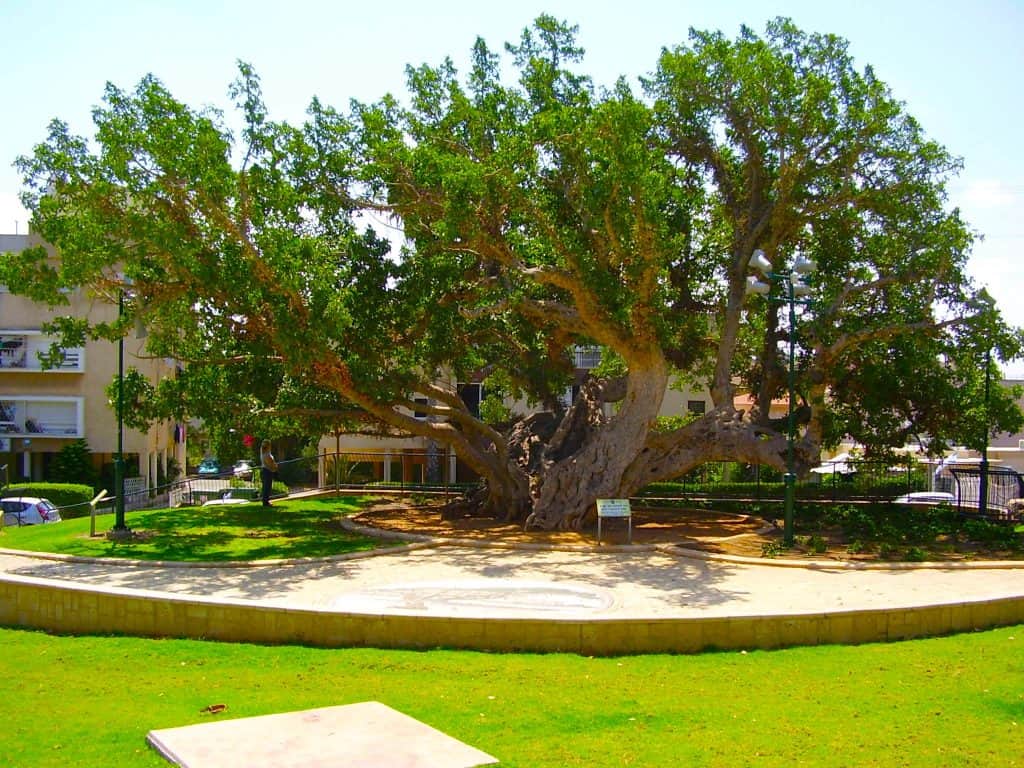
Credit: Dr. Avishai Teicher Pikiwiki Israel, CC BY 2.5, via Wikimedia Commons
Even though there is no natural way to date a sycamore tree, its age is estimated to be hundreds of years old. The diameter of the trunk is 24ft. And is probably the oldest sycamore tree in the Holy Land. He is in a public park in Netanya, In Binyamin Mintz St’.
The tree, already in the past, had caught the eyes of famous explorers. In 1882, Charles Wilson, one the greatest explorers of the Land of Israel, published a book, Picturesque Palestine, Sinai, and Egypt. An illustration of the tree with all its splendor is shown to the keen reader.
The Tree in Art
One of the most known pieces of art you can see the sycamore tree in the context of the Land of Israel is the Lachish Reliefs. In short, the reliefs are sets of Assyrian palace reliefs narrating the story of the Assyrian victory over the Kingdom of Judah during the Siege of Lachish in 701 BCE. Also, you can see the sycamore on four mosaic floors in the Land of Israel from the Byzantine Period. All the sites where they found the floor decorated with sycamore are areas where the tree could grow.
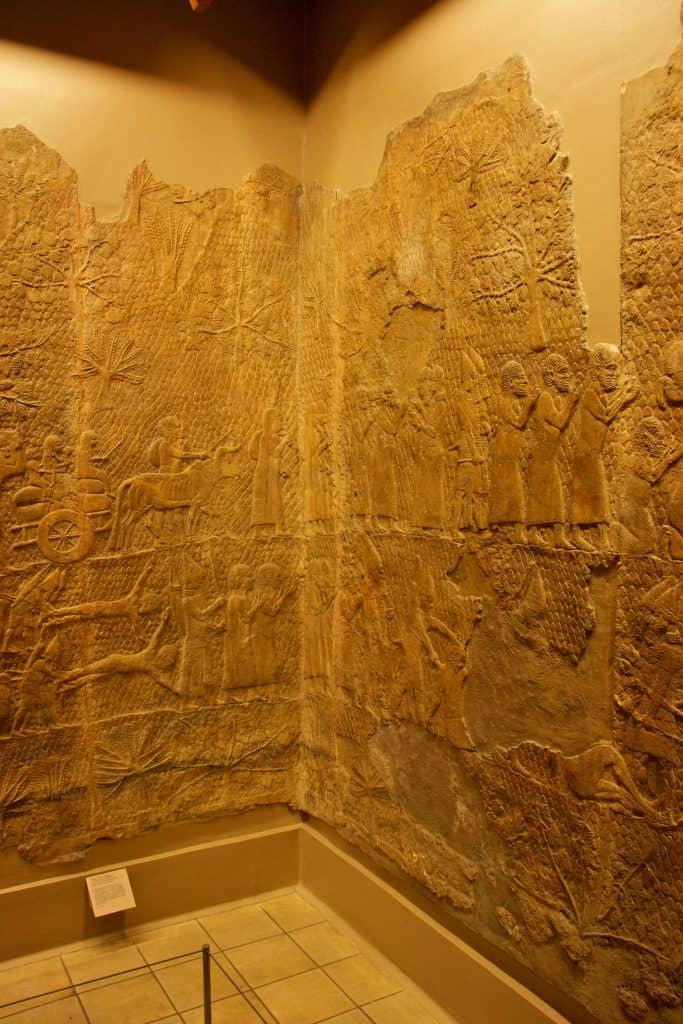
Credit: Photograph by Mike Peel (www.mikepeel.net)., CC BY-SA 4.0, via Wikimedia Commons
For example, in Sepphoris National Park, a mosaic describes festivities related to the Nile. There you can see the sycamore tree as well. Also, In mosaic floors of Byzantine churches in Israel like Khirbet (lit. ruin in Arabic) Beit Loya or Khirbet Midras in the Judean Hills. Lastly, you can find the sycamore fruit on the mosaic floor of the Samaritan Synagogue at Khirbet Samra, dated to the Byzantine Period.







